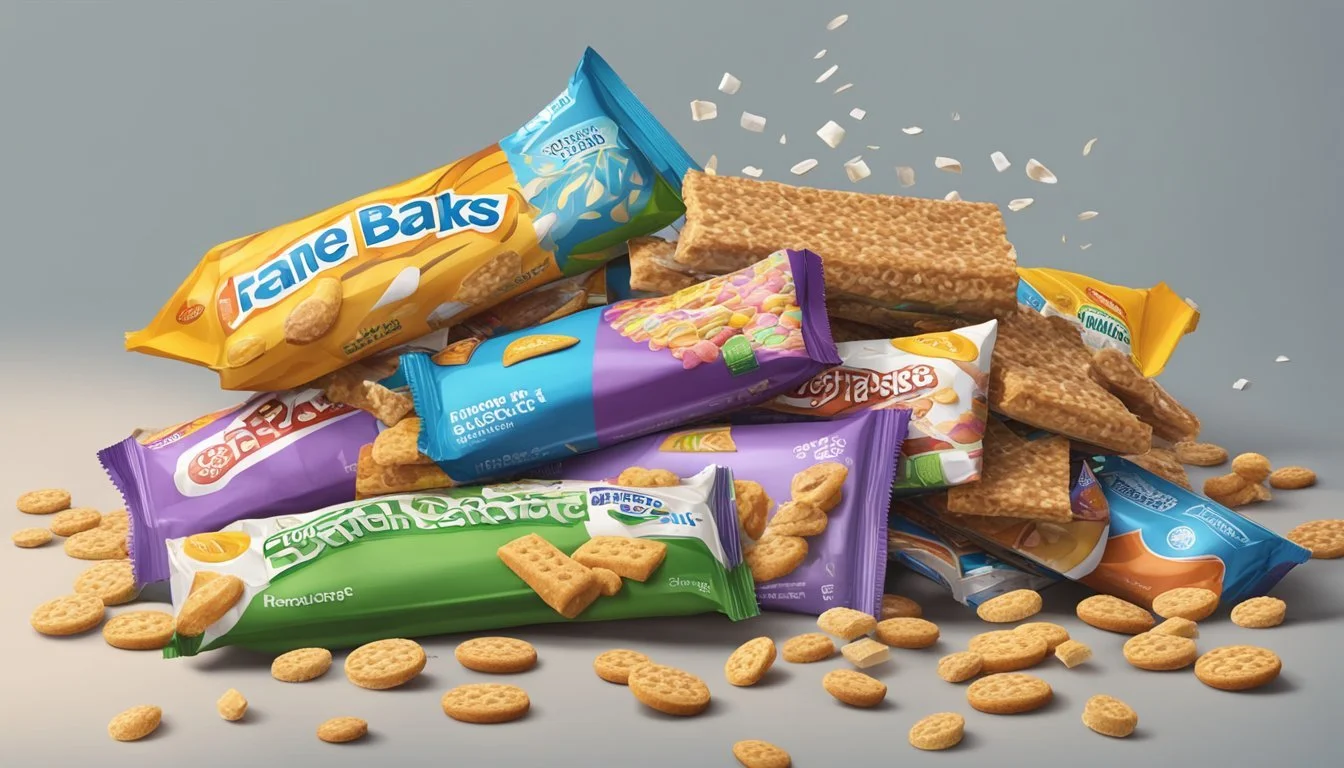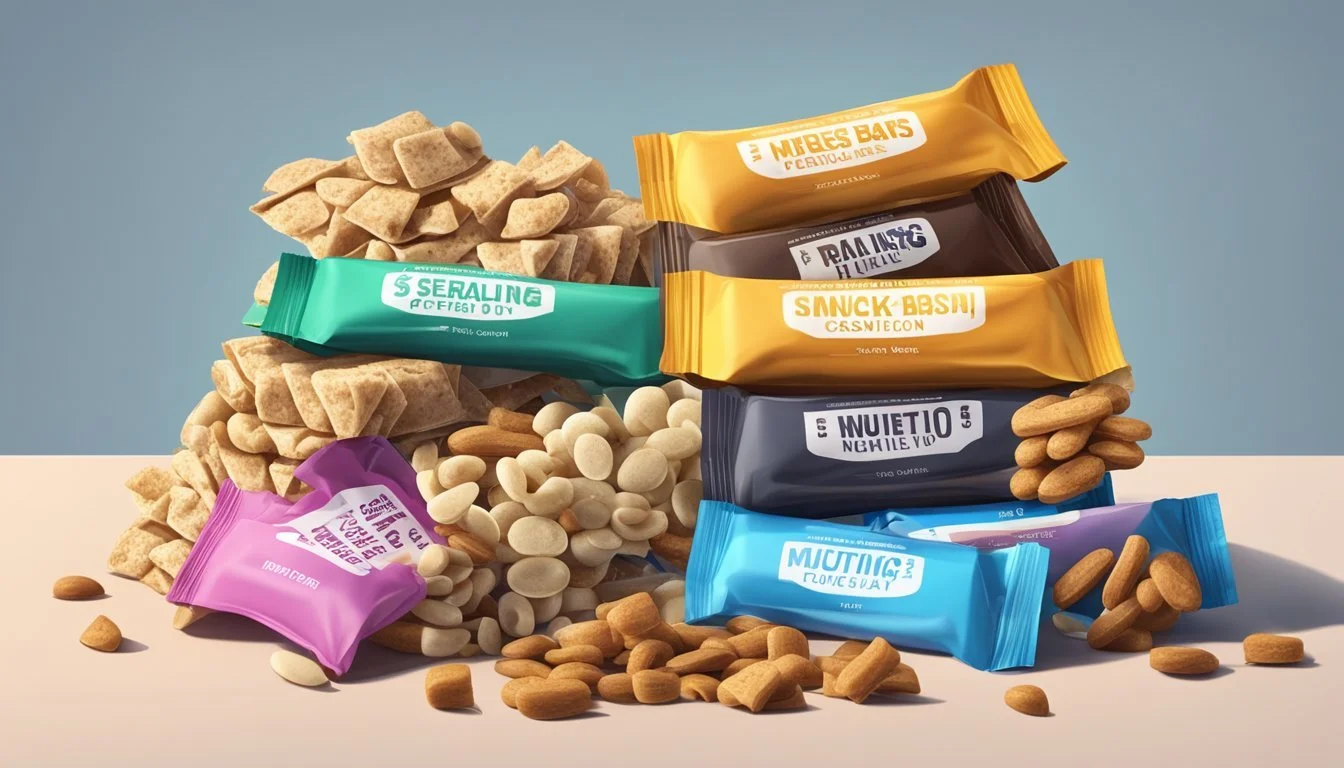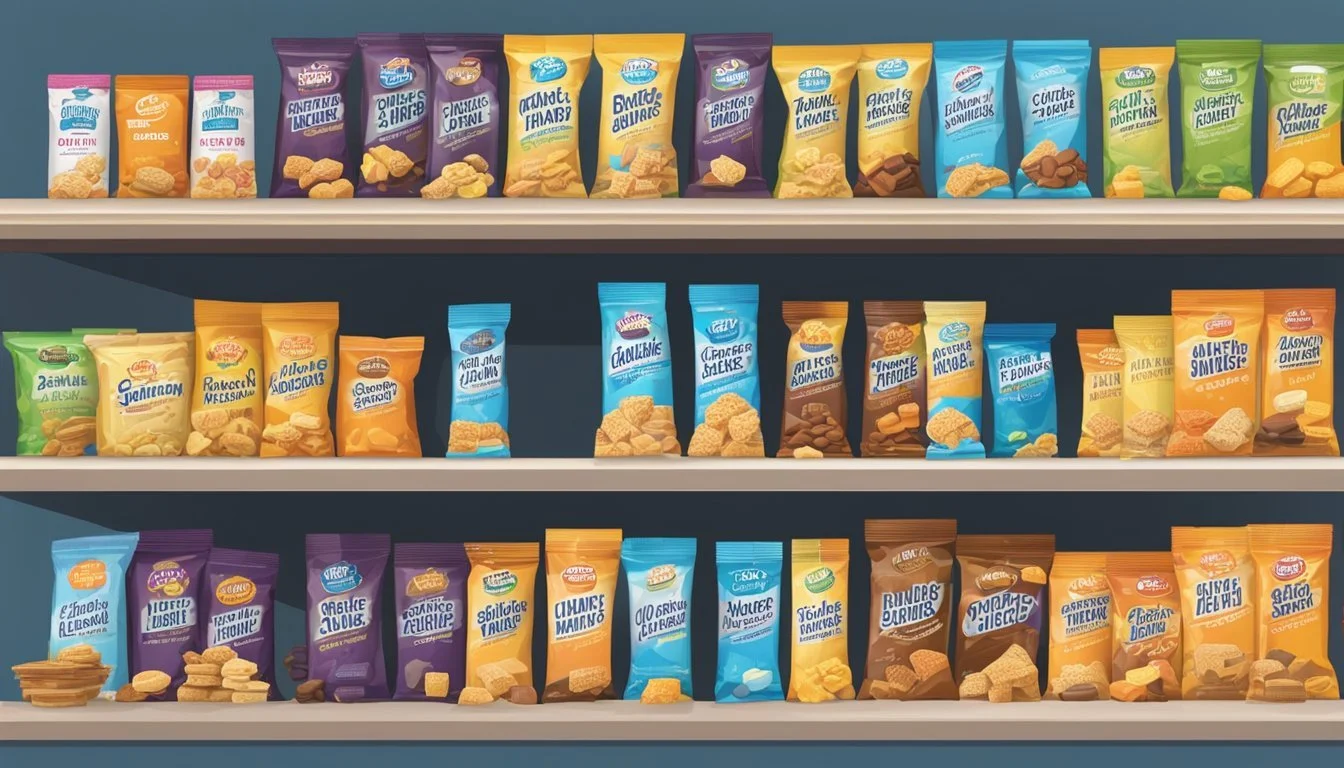How Many Servings of Bulk Snack Bars Is Too Much
Guidelines for Healthy Consumption
Snack bars are a convenient source of energy and nutrition for those leading an active lifestyle. When considering how many servings of bulk snack bars is appropriate, moderation is key. Consuming more than two snack bars per day can lead to an excess intake of sugar and calories, which may undermine a healthy diet.
For individuals focusing on muscle gain, snack bars with balanced macronutrients can support their nutritional goals. It's essential to choose bars that offer a good mix of protein, carbohydrates, and healthy fats without an overload of sugars. Balancing these bars with whole foods ensures a well-rounded diet.
While snack bars are a handy option, they should complement a diet rich in fruits, vegetables, and other whole foods. Avoid relying exclusively on them for daily nutrition. Integrating these bars correctly into one's diet grants the benefits of convenience and energy without compromising overall health.
Understanding Servings and Portions
Understanding the difference between a serving size and portion size can help manage snack consumption effectively. Serving size refers to the standardized amount of food, whereas portion size is the quantity one chooses to eat.
What Constitutes a Serving?
A serving size is a standardized amount set for nutritional guidelines.
For instance, one serving of a snack bar often equals about 30 grams. Nutritional facts on the packaging are based on this serving size. Look at calories, energy, and other nutrients listed on the label, which are meant for this specific amount.
Always check the serving size when tracking diet and nutrition to ensure accurate counting.
Portion Control Basics
Portion size is the amount of food actually consumed.
Unlike serving sizes, portions are flexible and can vary. The portion could be more or less than the recommended serving size. Portion control is crucial for weight loss and maintaining a balanced diet.
When eating snack bars, it’s easy to consume multiple servings in one sitting. Measuring your snack can help maintain better control over calories and nutrition intake.
The Role of Snack Bars in Diet
Snack bars can be nutritious but should not be overconsumed.
A single serving of a snack bar can be part of a balanced diet. They provide energy and can be beneficial for those needing quick, convenient options. However, consuming several servings in one go can lead to excessive calorie intake, counterproductive to weight loss goals.
Monitoring both serving and portion sizes ensures snack bars contribute positively to diet.
Nutritional Composition of Snack Bars
Snack bars come with a diverse nutritional profile, which varies significantly based on ingredients and brands. This section explains key nutritional components including calories, macronutrient distribution, vitamins, minerals, dietary fiber, sugar content, and potential artificial additives.
Calories and Macronutrients
Calories: Snack bars range in caloric content, with most bars containing between 130 to 200 calories per serving.
Protein: These bars often provide 3 to 6 grams of protein, playing a role in muscle repair and satiety. High-protein variations might contain more.
Fat: Fat content can range from 5 to 9 grams per bar, with about half coming from saturated fats. Watch for too much saturated fat, as it's linked to heart disease.
Carbohydrates: Carbohydrate levels vary widely, typically around 20 to 30 grams per serving. This includes both sugars and complex carbs for energy.
Vitamins, Minerals, and Fiber Content
Vitamins and Minerals: Snack bars can be fortified with vitamins like B and E, and minerals such as iron and calcium. The specific amounts should be checked on individual labels.
Fiber: Dietary fiber is crucial for digestive health. Many bars offer 3 to 5 grams per serving, which aids in promoting a healthy digestive system and ensuring regularity.
Presence and Importance: Fiber not only helps with digestion but also contributes to prolonged satiety, making it a valuable component of a nutritious snack bar.
Added Sugars and Artificial Ingredients
Added Sugars: It's important to differentiate between natural and added sugars. Many snack bars contain added sugars to enhance flavor, often totaling up to 10 grams per serving. Excessive added sugar intake can lead to health issues.
Artificial Ingredients: Some snack bars include artificial flavors, preservatives, and colorants. These are often added to enhance taste and prolong shelf-life, yet some consumers prefer to avoid them due to potential health concerns.
Benefits and Drawbacks: Natural ingredients are generally seen as healthier, but artificial additives can help in product preservation without significantly altering the core nutrition if consumed moderately.
This structured analysis of the nutritional composition of snack bars helps in making informed choices based on individual dietary needs and health goals.
Health Guidelines and Daily Intake Recommendations
Understanding the right amount of servings for bulk snack bars involves knowing daily intake recommendations for essential nutrients like protein and calories. These guidelines vary by age, activity level, and overall dietary needs.
Understanding the Dietary Reference Intake (DRI)
Dietary Reference Intake (DRI) values are crucial benchmarks set by nutrition experts. They indicate the daily levels of nutrient intake considered sufficient for maintaining good health.
For protein, the DRI suggests an average of 46 grams per day for adult women and 56 grams per day for adult men.
Caloric intake recommendations vary widely but can generally range from 1,800 to 2,400 calories per day for adult women and 2,200 to 3,000 calories per day for adult men.
Protein and Calorie Needs by Age and Activity Level
Protein and calorie needs change significantly based on age and physical activity.
Children aged 4-8 years typically need around 1,200 to 1,400 calories per day and 19 grams of protein.
For teenagers, energy needs increase, with girls aged 14-18 requiring 1,800 to 2,400 calories and 46 grams of protein, while boys need 2,200 to 3,200 calories and 52 grams of protein.
Adults who lead a sedentary lifestyle should aim for the lower end of their caloric range, while those with active or very active lifestyles should consume more to support their energy expenditure.
Understanding these dietary guidelines helps in determining appropriate serving sizes for bulk snack bars and ensures balanced nutrition.
Practical Snacking Tips
When choosing bulk snack bars, it's essential to balance convenience, nutrition, energy needs, and alternatives to avoid potential overconsumption. Consideration of ingredients and portion sizes can help maintain a healthy diet.
Balancing Convenience and Nutrition
Snack bars are often chosen for their convenience. They come pre-packaged and are easy to transport. However, not all snack bars are created equal. It's essential to look at the nutritional content on the label.
Aim for bars with 200-300 calories and at least 20 grams of protein. Check for added sugars; avoid those with high sugar content. Fruits, vegetables, nuts, and seeds can be great complements to your snack bars, ensuring you get a variety of nutrients.
Choosing Snacks for Energy and Muscle Recovery
Selecting the right snacks is crucial for sustained energy and muscle recovery. Snack bars with a good balance of carbohydrates, protein, and healthy fats can support these goals.
Consider options like protein bars, nuts, and yogurt, which provide sustained energy. Post-workout, a protein shake with milk or a sandwich with lean meat can help in muscle recovery. These choices ensure you get protein for muscle repair and carbs for energy replenishment.
Healthy Alternatives to Snack Bars
Diversifying your snacks can prevent monotony and improve nutrient intake. Instead of relying solely on snack bars, incorporate other healthy options. Fruits like apples or bananas are portable and nutritious.
Vegetables such as carrot sticks or cucumber slices paired with hummus are also great options. Nuts and seeds offer good fats and protein. Cottage cheese and beef jerky are other practical alternatives that provide a mix of protein and essential nutrients without excessive sugars.
Potential Health Impacts of Excessive Consumption
Excessive consumption of bulk snack bars can lead to multiple health issues. These include weight management problems, increased sugar intake, and the risk of triggering allergies or sensitivities.
Weight Management Concerns
Bulk snack bars often contain high levels of calories and sugars, contributing to unwanted weight gain when eaten in excess.
Calorie density: Many snack bars are calorie-dense, meaning a small portion packs a lot of calories.
Lack of satiety: Despite the high calorie content, they might not be filling, causing overconsumption.
Weight gain: Consuming too many snack bars can lead to an imbalance between calorie intake and expenditure, resulting in weight gain.
Sugar Intake and Health Risks
High sugar content in snack bars poses significant health risks.
Excessive sugar intake: Many snack bars contain added sugars which can lead to health problems.
Heart disease risk: Studies suggest a link between high sugar consumption and heart disease.
Diabetes: Overconsumption of sugary snacks can increase the risk of type 2 diabetes.
Tooth decay: Frequent consumption of sugary snack bars can also contribute to dental issues.
Understanding Allergies and Sensitivities
Ingredients in snack bars can trigger allergies or sensitivities in some individuals.
Common allergens: Nuts, soy, and dairy are frequent ingredients that may cause allergic reactions.
Label awareness: Individuals with food allergies should always check labels to avoid triggers.
Gastrointestinal issues: Some preservatives and additives used in snack bars can lead to gastrointestinal discomfort in sensitive individuals.
By considering these health impacts, individuals can make more informed choices regarding their snack bar consumption.
Making Smart Snack Choices
Smart snacking involves looking at nutritional content, cost, and common pitfalls. Here's how to make well-informed decisions about protein bars and other snacks.
Identifying High-Quality Protein Bars
High-quality protein bars often have whole ingredients like nuts, seeds, and oats.
Check for at least 20 grams of protein per serving with minimal added sugars. Ingredients should include whey or plant-based proteins such as pea protein or brown rice protein, rather than fillers.
Look for bars that contain fewer than 15 grams of sugar and steer clear of those with artificial sweeteners or preservatives.
Reading labels carefully is key to avoiding bars that have high-calorie counts but low nutritional value.
Analyzing Cost vs. Nutritional Value
Balancing cost with nutritional value helps in choosing the best snack bar.
Cheaper bulk bars may save money initially but might not provide adequate nutrition. Investing a bit more for nutrient-dense bars can be beneficial in the long run.
Unit pricing helps compare costs accurately. For instance, a bar costing $2.50 but offering high-quality protein and essential vitamins and minerals may be a better deal than a cheaper, less nutritious option.
Common Mistakes in Snack Selection
Many mistakes involve overlooking ingredient lists or falling for marketing gimmicks.
Assuming all protein bars are healthy is incorrect. Bars high in added sugars can equate to candy bars.
Relying on protein bars as a meal replacement without checking for balanced nutrition is another trap.
Snacking too frequently on bars, even high-quality ones, can lead to excess calorie intake. Always verify the nutritional information to avoid common pitfalls in snack choices.
Using these guidelines, making smart snack choices becomes a manageable and straightforward task, ensuring better health and satiety.







